Essential Guide to Traveling with Your Bike: What Every Cyclist Should Know

When you're planning to take your beloved bike on a journey, whether it's for a vacation, race, or extended cycling adventure, there are plenty of considerations and preparations to make. Traveling with your bike can seem daunting, but with the right approach, it becomes an exciting aspect of the cycling experience. This comprehensive guide will walk you through the necessary steps of packing, transporting, and caring for your bike while traveling, ensuring you're well-equipped to hit the ground pedaling upon reaching your destination.
Preparing Your Bike for the Trip
Before you even think about packing, your bike needs a thorough inspection. This check ensures your ride is in top shape for the journey ahead and helps spot potential issues that could become problematic down the line.
Perform a Full Bike Check: Start by examining your bike's overall condition. Ensure the frame has no cracks, the wheels are true, and your gears are shifting smoothly. Check your brakes for adequate stopping power, and make sure your tires are in good condition. It's advisable to replace worn-out components before embarking on your trip.
Clean Your Bike: A clean bike is easier to inspect, pack, and maintain. Remove any dirt, mud, or road grime from your frame, chain, and components. A clean bike also travels better, ensuring you're not carrying extra weight in dirt or risking additional wear and tear on your components.
Packing Your Bike for Travel
Packing your bike is a meticulous process that calls for attention to detail. How well you pack your bike can make the difference between a trouble-free trip and a logistical nightmare. Follow these steps for a safe and efficient packing:
Remove Pedals: Pedals jutting out can poke holes in your bike bag or box, or get bent during transit. Utilize a pedal wrench to remove them. Remember, the left pedal is reverse-threaded, so you'll need to turn clockwise to loosen.
Turn and Lower Your Handlebars: This reduces the width of your bike, making it easier to fit into a bag or box. Loosen your stem bolts and turn your handlebars sideways. If there's enough space, lower your stem.
Remove or Lower Your Seat Post: Removing your seat post reduces the height of your bike. If removal isn't an option, lower the seat post as far as possible.
Remove Your Wheels: Deflating your tires slightly gives them some give, helping them absorb impacts during transit. Once deflated, you can remove your wheels.
Secure Your Bike: Whether you're using a bike bag or box, ensure your bike is well secured. Pay extra attention to the derailleur, using padding to prevent scratches or impacts.
Pack Your Accessories: Don't forget to pack your helmet, shoes, and other accessories. Use these items to provide additional padding to your bike
Choosing a Bike Bag or Box
Selecting the right carrier for your bike is critical. Your choice will depend on several factors including the type of your bike, your budget, the mode of transportation, and storage facilities at your destination.
Hardshell cases offer superior protection but can be more expensive and cumbersome to transport. Soft bags are lighter and generally cheaper, but they require additional padding to ensure adequate bike protection. Cardboard bike boxes are a budget-friendly choice and can be surprisingly sturdy if packed correctly.
Regardless of the type of carrier, using a VELOSOCK bicycle cover as an additional layer of protection can save your bike from unnecessary scratches, dirt, and grime. These covers are lightweight, easy to maneuver, and offer excellent protection.
Transporting Your Bike
Now, let's talk about the actual journey. There's no one-size-fits-all solution for bike transportation, as every travel scenario is unique. However, there are common methods for most circumstances, each with their considerations.
Air Travel: If you're flying with your bike, it's crucial to understand your chosen airline's bicycle policies as these can vary. Some airlines treat bicycles as a regular checked bag, while others have specific charges. Keep your baggage receipt safe in case of loss or damage. Also, be aware that you might need to collect your bike from the oversized luggage area, not the regular carousel.
Car Travel: A bike rack is indispensable for road trips. Roof racks, trunk racks, and hitch racks are the most common types. Roof racks are secure and don't obstruct rear access but can be difficult to load and reduce fuel efficiency. Trunk racks are easy to install and affordable but may prevent access to the trunk. Hitch racks are stable and easy to load but require a hitch receiver.
If you're using a rack, consider a bike cover specifically designed for car racks. Our VELOSOCK bike cover for car racks offers exceptional protection against road grime, bugs, and weather elements while maintaining your bike's accessibility. With standard, water-repellant, and waterproof options, you can select the level of protection that suits your needs. ( Bicycle Covers for Bike Racks – Velosock Bike Covers )
Train/Bus Travel: Some trains and buses allow bikes, but it's best to check the policies beforehand. In most cases, you'll need to pack your bike in a bag or box. Keep in mind that you may have to lift your packed bike onto luggage racks
Unpacking and Assembling Your Bike
Upon arriving at your destination, it's time to get your bike road-ready again. This process is usually the reverse of your packing steps, but here are a few extra tips to ensure it goes smoothly:
Inspect Your Bike: Before you start assembling, do a quick check for any potential damage incurred during transit. Look for dents, cracks, or any components that might have come loose.
Reassemble Carefully: Reinstall the seat post, handlebars, pedals, and wheels. Ensure all bolts and screws are tightened appropriately - not too loose, not too tight. Pay particular attention to your brakes and gears.
Pump Your Tires: Don't forget to reinflate your tires before you head out. You can typically find the recommended PSI on the sidewall of your tires
Maintenance While Traveling
While on your trip, regular maintenance will keep your bike in top shape and prevent unexpected issues. Here's what you should do:
Clean Regularly: Especially if you're riding in wet or muddy conditions, clean your bike after every ride. This prevents dirt and grime from causing wear and tear on your components.
Check Tire Pressure: Changes in altitude and temperature can affect tire pressure, so check it regularly.
Inspect Before Every Ride: Do a quick check of your brakes, tires, and gears before you set off each day
The Role of Bike Covers
While a bike cover may seem like an optional accessory, it plays a significant role in protecting your bike during your travels. Using a cover like the VELOSOCK can safeguard your bike against various damaging factors such as dirt, dust, and moisture. It also helps keep your surrounding area clean, preventing dirt and grease from your bike from spreading to your car, tent, or hotel room.
In conclusion, traveling with your bike is a rewarding experience that opens up a wealth of opportunities for exploration and adventure. With careful preparation and the right equipment, you can ensure your bike remains in excellent condition throughout your trip. VELOSOCK is here to enhance your travel experience with bike covers designed to protect your bike and make your travels easier
Post-Travel Care for Your Bike
After a journey – whether it's been an off-road adventure or a city excursion – your bike will need some TLC. Post-travel care is not only essential for maintaining your bike's longevity but also prepares it for your next adventure.
Deep Clean: Post-travel is the perfect time for a thorough cleaning of your bike. Pay attention to the chain, cassette, and derailleurs, which are the areas where dirt and grime tend to accumulate. Make sure to dry your bike thoroughly after washing to avoid rusting.
Detailed Inspection: Check your bike thoroughly for any signs of damage or wear and tear. Look for any loose bolts or components and make sure everything is tightened and adjusted correctly.
Maintenance Check: Lubricate the chain, check brake pads for wear, check the tires for any cuts or punctures, and ensure all gears are shifting smoothly. If you spot any issues, it might be a good idea to take your bike to a local bike shop for a tune-up
Bike Storage
Storing your bike properly after a trip is just as important as how you care for it during your travels. Proper storage prevents unnecessary damage and wear, helping to extend the life of your bike.
Consider using a high-quality bike cover like the VELOSOCK even when storing your bike. Our covers keep your bike shielded from dust and moisture, while also protecting your surroundings from bike grease and dirt. They're a worthwhile investment for anyone serious about taking care of their bike
Conclusion: Traveling with your bike is a fantastic way to explore new terrains, enjoy your favorite sport, and challenge yourself. With the right preparation and care, the journey can be as smooth and rewarding as the destination. Remember, every journey is a learning experience, and each trip will make you more adept at handling your bike's travel needs.
VELOSOCK is here to help protect your bike and make your travels easier. Our bike covers provide a convenient and efficient solution for bike protection, whether you're on the move or storing your bike at home. Because at the end of the day, the more we can help you focus on enjoying the ride, the better.
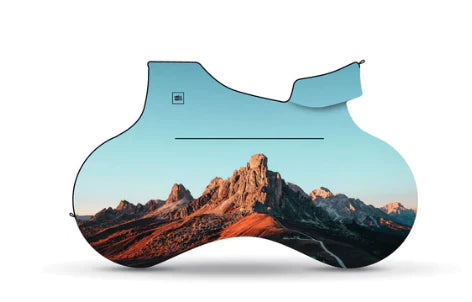
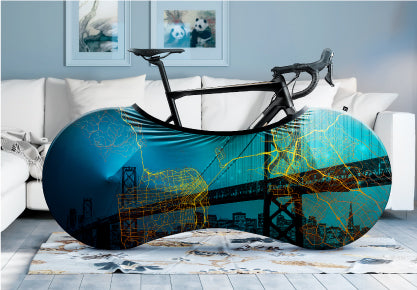
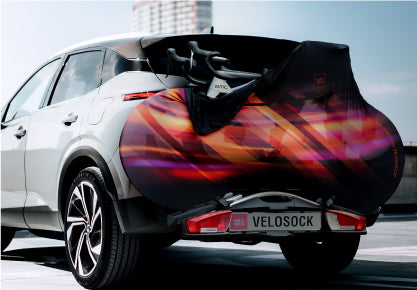
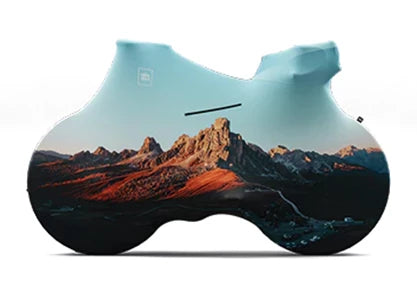


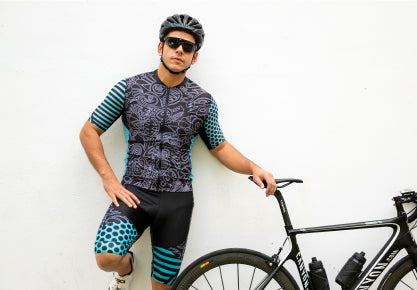


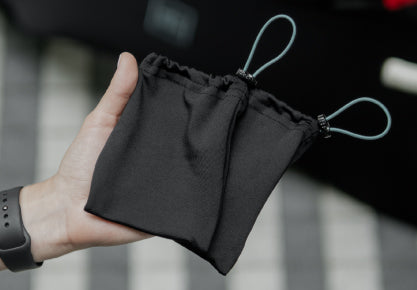

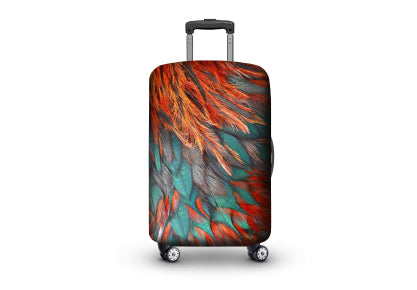
















Leave a comment